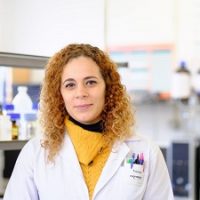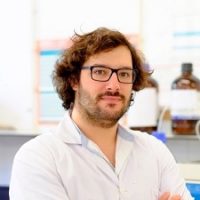Les Dixièmes Journées Scientifiques Internationales sur la Valorisation des Bioressources

Nabil BEN KHATRA
Le continent Africain est considérablement riche en régions écologiques avec plus d’une centaines d’écorégions terrestres, d’eau douce ou de zones humides, dont certaines sont de renommée mondiale. Il est doté d’une grande richesse en biodiversité et en ressources naturelles et abrite une grande diversité de forêts, qui contribuent activement à l’atténuation des impacts du changement climatique par le maintien du bilan de carbone et jouent un rôle crucial dans la réduction de la pauvreté et dans l’action en faveur de la mise en œuvre des Objectifs de Développement Durable (ODD) des Nations Unies à travers ses services écosystémiques, économiques et sociaux. Une des particularités du continent africain est la richesse du sol, dont les terres fertiles sont toutefois inégalement réparties, avec de grandes zones désertiques dans le bassin sahélien et des zones humides très fertiles.
La richesse de ses différents écosystèmes constitue un capital naturel d’une grande importance pour le développement socioéconomique de la population africaine, qui est en croissance démographique rapide et qui se trouve majoritairement dépendante des services écosystémiques pour sa subsistance.
Toutefois, ces écosystèmes subissent une forte pression anthropozoogène à laquelle sont conjugués les effets du changement climatique, causant leur dégradation et provoquant une grande érosion génétique. Cette détérioration progressive s’effectue à un rythme alarmant entrainant des répercussions négatives sur les plans socio-économiques et environnementaux.
L’appréciation des performances économiques et du progrès social, fondés sur les indicateurs existants (comptabilité nationale et enquêtes) ne prennent pas en compte la valeur des écosystèmes et les dégradations induites par le développement économique. A cet effet, il est important de mettre en place des comptes du capital naturel (CCN) basés sur le système de comptabilité environnementale et économique afin que le capital naturel ainsi que les services écosystémiques soient valorisés et pris en compte de manière structurelle dans la prise de décision à tous les niveaux (local, national et international). La comptabilité écosystémique constitue ainsi une des solutions indispensables permettant d’étudier les évolutions des écosystèmes et le coût économique de leur restauration.

Mohamed Ali MAROUANI
La valorisation de la recherche est souvent présentée comme le talon d’Achille de l’innovation dans des pays qui comme la Tunisie ont de performances très satisfaisantes en termes de publications scientifiques, mais peu de retombées socio-économiques ou sociétales. Le programme « Appui et promotion de l’innovation scientifique durable en Tunisie » a pour objectif de lancer des projets pilotes permettant de valoriser des résultats de recherches réalisées en Tunisie. Ces recherches sont souvent réalisées en partenariat avec l’IRD, dans le cadre de dispositifs et outils structurants (Laboratoires mixtes internationaux, jeunes équipes associées internationales, etc.) permettant de créer des collaborations scientifiques durables entre plusieurs laboratoires des deux rives de la Méditerranée.

Georgia AIFANDOPOULOU

Dominique GRIZEAU
towards eco-friendly and cost-effective extraction processes.
Some species of algae are currently cultivated to produce carotenoids mainly β-carotene, and astaxanthin esters. These applications correspond to niche markets in the cosmetic and nutraceutical sectors, with their coloring and biological properties. Thanks to their chemodiversity, other tetraterpenoids or their derivatives may soon be exploited industrially. Such developments justify the research activities that are currently being carried out to control the environmental and energetic footprints of the production processes but also to avoid the denaturation of these cell fractions. The performances of new non-conventional extraction processes are compared for their environmental and energy footprints, but also their impact on the thermolability and oxidative stability of the carotenoids. Future developments should also integrate biorefinery-type approaches.

Mohamed JEBBAR
The deep sea is the last frontier that has been barely or almost never explored and is qualified as extreme (e.g. hydrothermal vents, cold seeps, sediments, hypersaline basins). Besides the depth, and therefore the ubiquity of the hydrostatic pressure, and except for organic matter falls from photosynthesis, the deep sea is essentially independent of sunlight and photosynthetic primary production. Extreme conditions prevail (salinity, pressure, oligotrophy, presence of radiation, high temperatures, etc.) where microorganisms, particularly extremophiles, thrive. Although the oxygen on the deep sea comes from photosynthesis, the prokaryotes (Archaea and Bacteria) in these ecosystems based on microbial chemosynthesis frequently use other electron acceptors (sulfates, nitrates, etc.), enabling communities to evolve without relying on dissolved oxygen. Over the past 40 years, scientists have explored deep sea hydrothermal vent habitats worldwide and studied a number of organisms, their metabolic and physiological properties and their broad phylogenetic diversity. Deep sea hydrothermal vents are characterized by large fluctuations in salinity (0.1-6%), temperature (2-407°C), pH (1-8) and hydrostatic pressure (up to 60 MPa). Therefore, archaeal and bacterial communities (associated with eukaryotic and non-eukaryotic hosts) that thrive in these environments are expected to include many ecotypes. Bacteria and archaea from these extreme environments are known to possess biomolecules that allow biotransformations under extreme conditions, these biomolecules (proteins/enzymes; exopolysaccharides, lipids, reserve molecules, secondary metabolites, etc.) display original properties with a great biotechnological potential. Among the biotechnological applications of extremophilic bacteria and archaea, thermostable DNA polymerases are the best-known example. Other enzymes such as hydrolases derived from extremophilic prokaryotes have been widely used in the starch processing industry. Although the properties of extremophilic enzymes are attractive and well adapted to the frequently harsh conditions of industrial production, there are still many technical and technological difficulties in improving the production and widespread use of extremophilic enzymes in different biotechnological and industrial processes.

Sandrina HELENO
The constant search for foods with health benefits led to an intense investigation focused in the development of functional foods able to provide consumers and the food industry with new foods capable of promoting well-being and acting as health promoters. In this sense, both industry and academia have been together and making huge efforts to innovate and create differentiated foodstuff with high acceptability. Nature is the key, given its richness in matrices with strong bioactive properties that could be exploited in the combat of specific health issues.
Among the bioactive molecules found in the nature, mycosterols, that have high similarity with phytosterols (lowering cholesterol agents) in terms of chemical features are strong candidates for application in food formulations aiming at decreasing cholesterol levels through a direct competition for absorption in the human organism. According to the literature, Agaricus bisporus L. is the richest mushroom in these molecules, specially ergosterol. This mushroom is also most produced one worldwide, generating tons of noncommercial raw material (e.g. damaged mushrooms, subtracts, pieces of mushrooms) that have no economic value, but, are rich sources of mycosterols. Therefore, in the last years, A. bisporus residues were fully exploited: i) extraction optimization through different extraction technologies; ii) characterization of the obtained extracts through HPLC-UV, in terms of mycosterols; iv) evaluation of the hypocholesterolemic potential using CaCo2 cells; v) toxicity of the obtaining extracts in normal cells; vi) stability evaluation of the obtained extracts to light exposure, temperature, solubility; vii) incorporation in dairy products in the free form and also after encapsulation processes (yogurts, cheese); viii) effects on the developed foods in terms of nutritional, physical and chemical profiles; ix) evaluation of the hypocholesterolemic potential along the shelf-life.
All the developed yogurts and cheeses was made in strong collaboration with enterprises dedicated to the production and commercialization of dairy products and involved in the project ValorNatural, dedicated to the development of natural additives and bioactives.
These achievements allowed the establishment of the most promising extraction technique and the ideal extraction conditions, as also the to determine the active and nontoxic dose of the obtained mycosterol-enriched extract to be incorporated in the products. Also, the main goal of developing a product with hypocholesterolemic potential was also achieved; a decrease in the cholesterol absorption in about 30% was observed. These promising results originated a national Portuguese patent.

Márcio CAROCHO
The food industry is sparked by innovation, which allows the production of new foods, new technologies, and increases the overall safety of food products. Some technologies are focused on preserving the foods by means of sprayable technologies and plant-based plastic wraps, with much lower impact on the environment, and effectively reducing plastic consumption and waste. Some other technologies intend to preserve or color foods by means of natural preservatives and colorants, allowing for the use of vegetable residues as sources of bioactive molecules. New foods, or variations of known foods are also innovations the industry is eager to introduce. Recently, some of these innovations are in the form of ready to eat and dehydrated foods, as well as healthier and clean label products. In this presentation, and overview of some of these innovations is shown, with special focus on the research carried out at the Centro de Investigação de Montanha, of the Instituto Politécnico de Bragança, in Portugal, including research of several members.

